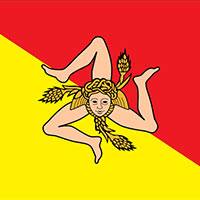Noto - the Baroque Wonder in Sicily
Together with seven other cities in the Val di Noto, the baroque city Noto is listed among the UNESCO World Heritage Sites. Noto was completely built from scratch on a new location after the terrible earthquake in 1693 that destroyed numerous towns and killed more than 60,000 people i Southern Sicily and Italy.
Only the scant ruins is left of the old town, now called Noto Antica, some 9 kilometres north of the present baroque town. Argueably the most beautiful town in Sicily, Noto is a breathtaking example of the Sicilian baroque. Churches, incredibly elaborate balconies and beautiful early 18th century buildings - all shining in golden sandstone. Noto was the location of several scenes in Antonioni's cinematic masterpiece L'avventura.
Built after the devastating earthquake in 1693, Noto – planned on a grid system by Giovanni Battista Landolina – has numerous baroque gems to offer tourists, from the breathtaking cathedral (duomo) with its monumental stairway to the incredibly charming baroque balconies.
The Church of San Domenico
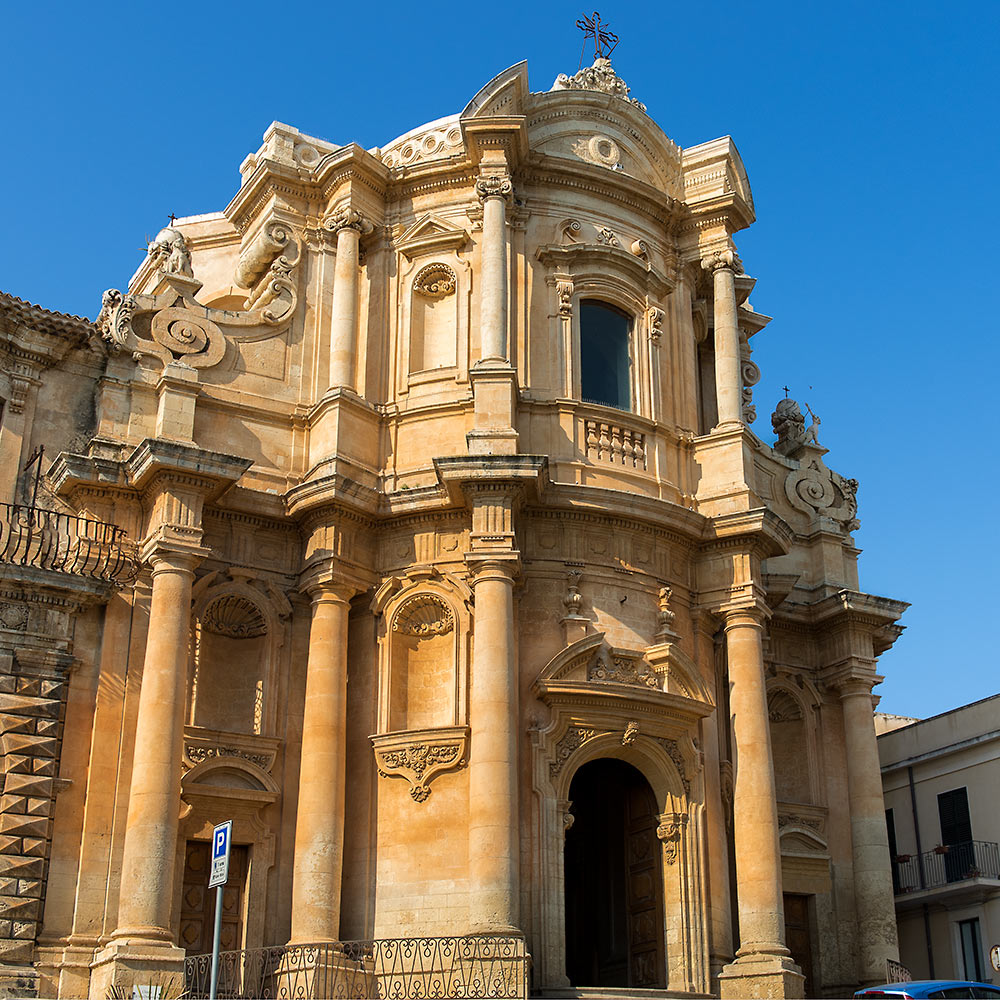
The spectacular facade of the church of San Domenico by Rosario Gagliardi (1690-c. 1762) from Syracuse, "a unique figure who operated in isolation in south-eastern Sicily, and yet was part of the international scene." (Maria Giuffrè: The Baroque Architecture of Sicily) Gagliardi's most important work is probably the cathedral in Ragusa Ibla, Duomo di San Giorgio (built 1744-75). According to Maria Giuffrè, "the true breadth and originality of Gagliardi's architectural designs is only apparent in his numerous drawings, which were probably intended for didactic treatise, or perhaps as a personal dossier to display his ideas, and which can only rarely be associated with actual constructions."
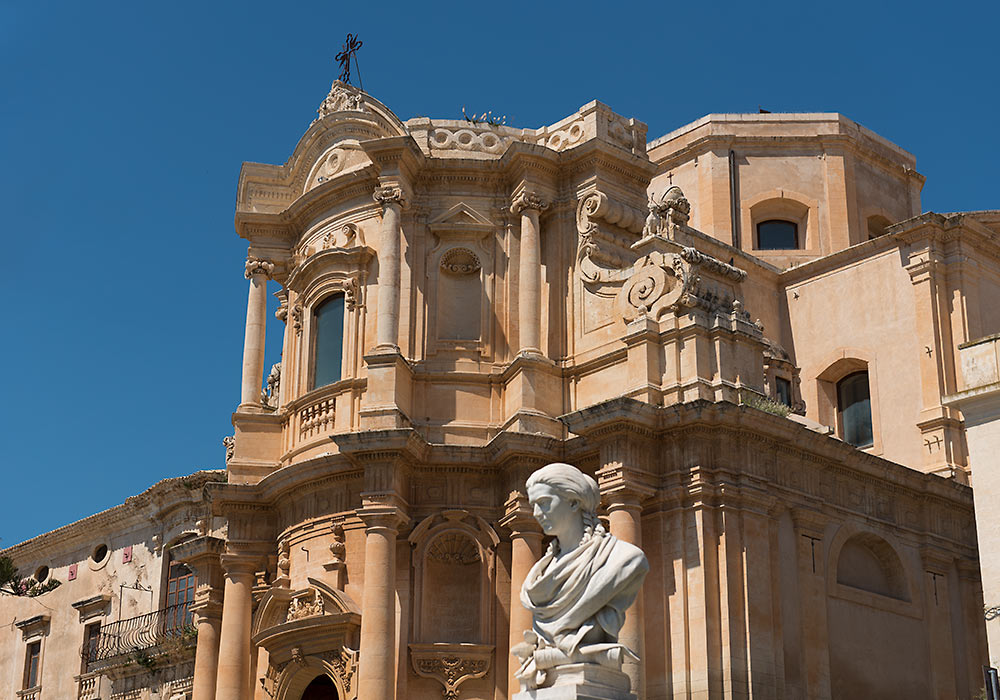
The church of San Domenico from another angle.
The monastery of the Santissimo Salvatore
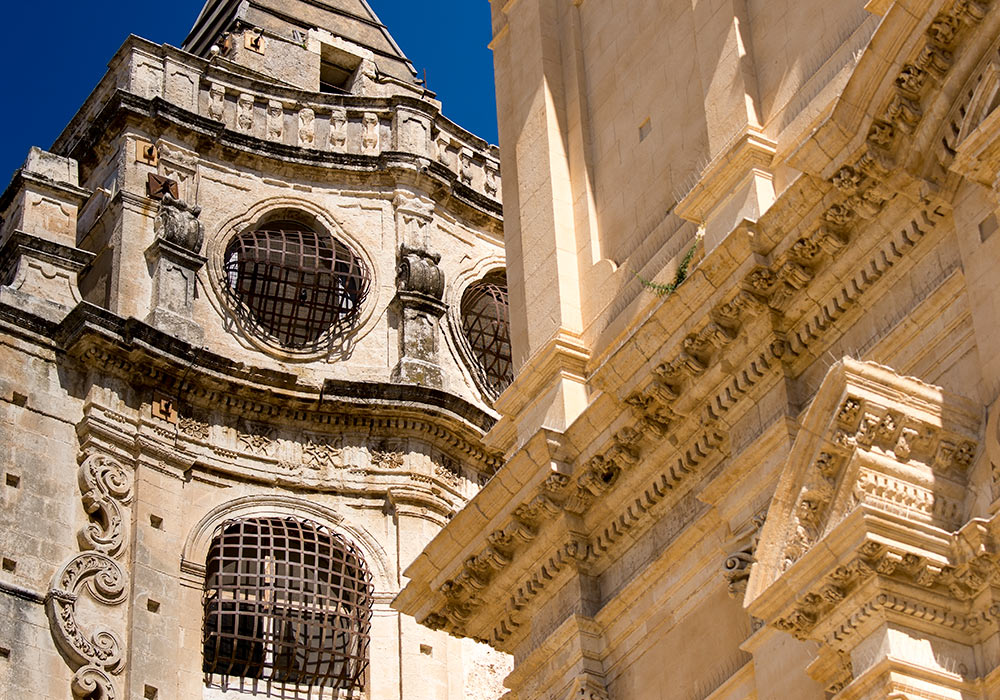
The undulating facade of the tower of the monastery of the Santissimo Salvatore. The number of details on the buildings is just amazing. To the right San Francesco all'Immacolata.
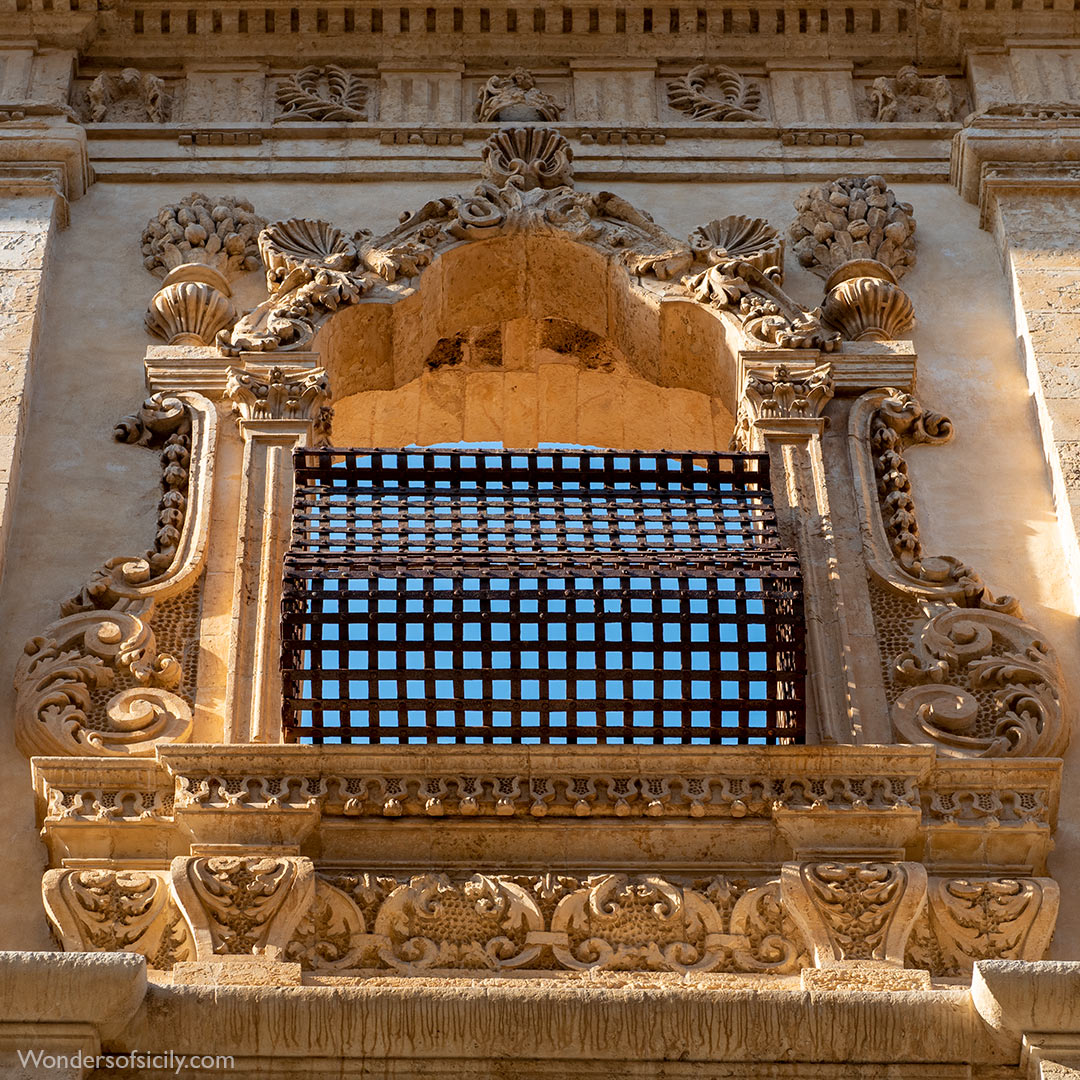
An elaborately decorated “window”/opening.
Chiesa di San Francesco d'Assisi all'Immacolata
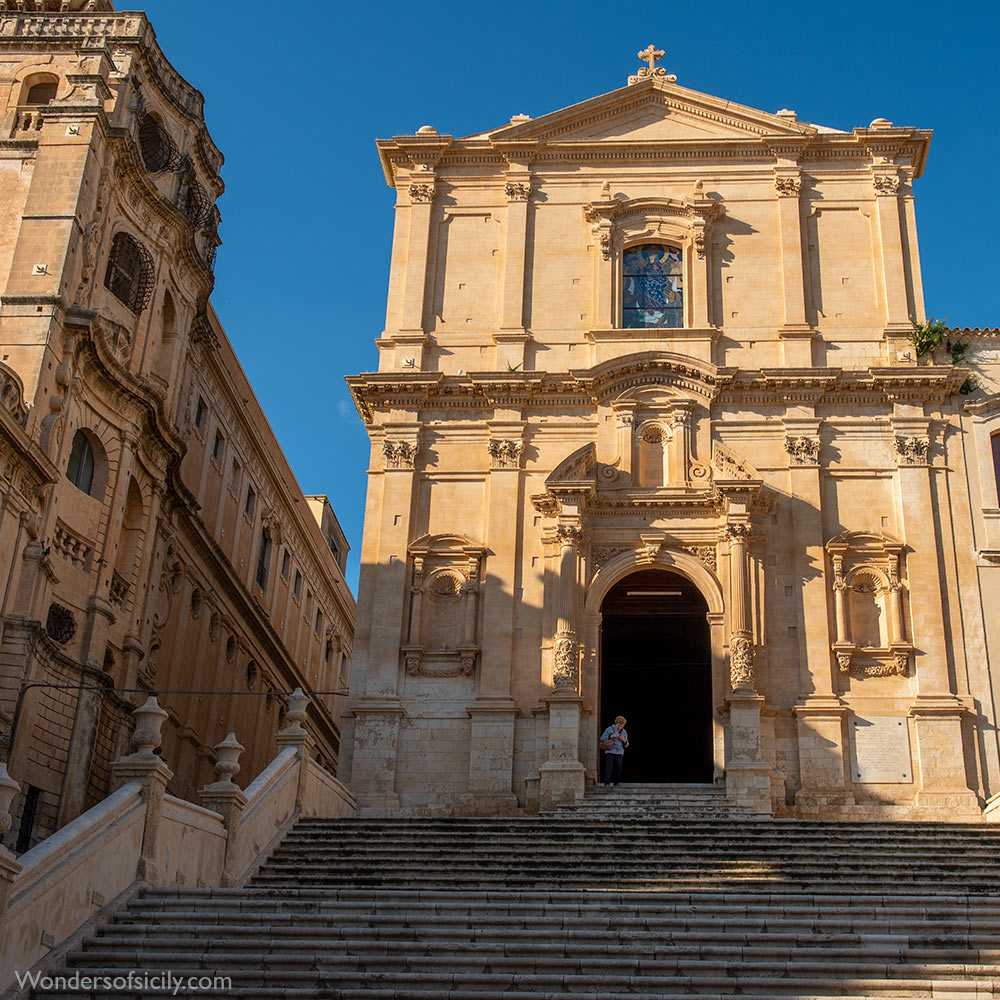
Chiesa di San Francesco d'Assisi all'Immacolata. Meghann Fahy and Aubrey Plaza are descending these stairs in The White Lotus S2E3 on HBO. The White Lotus is created, written, and directed by Mike White.
Sala degli Specchi in Palazzo Ducezio (now the town hall)
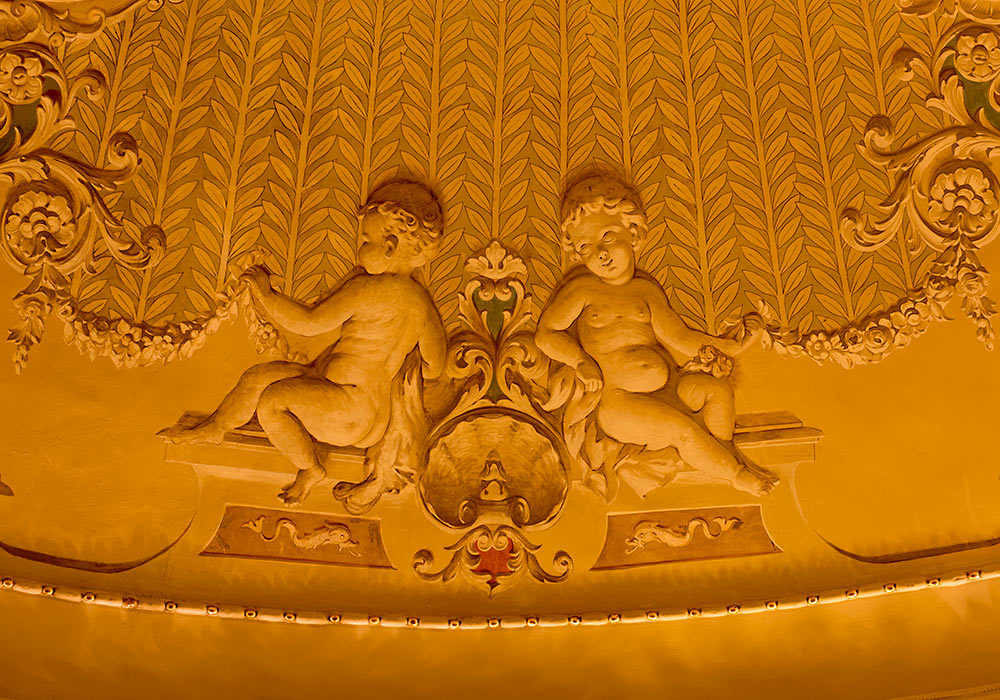
The ceiling in the Hall of mirrors (Sala degli Specchi) in Palazzo Ducezio (by Vincenzi Sinatra, 1746), now the town hall, is covered with marvellous examples of so-called trompe l'oeil (a style of painting in which things are painted in a way that makes them look like real, three dimensional, objects).
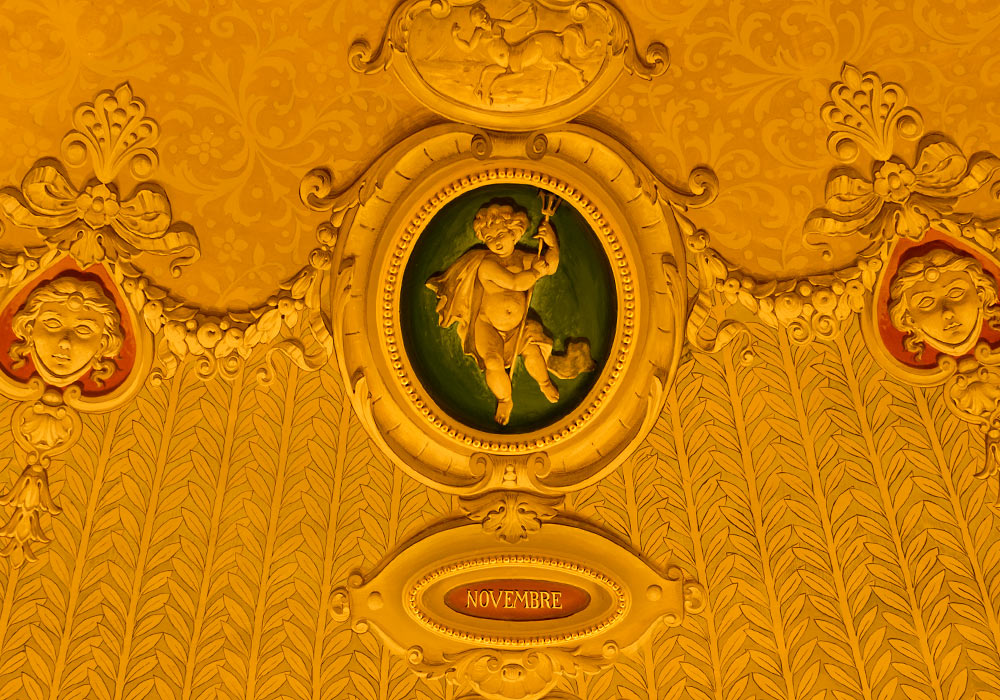
Another example of trompe l'oeil in the Hall of mirrors (Sala degli Specchi) in Palazzo Ducezio.
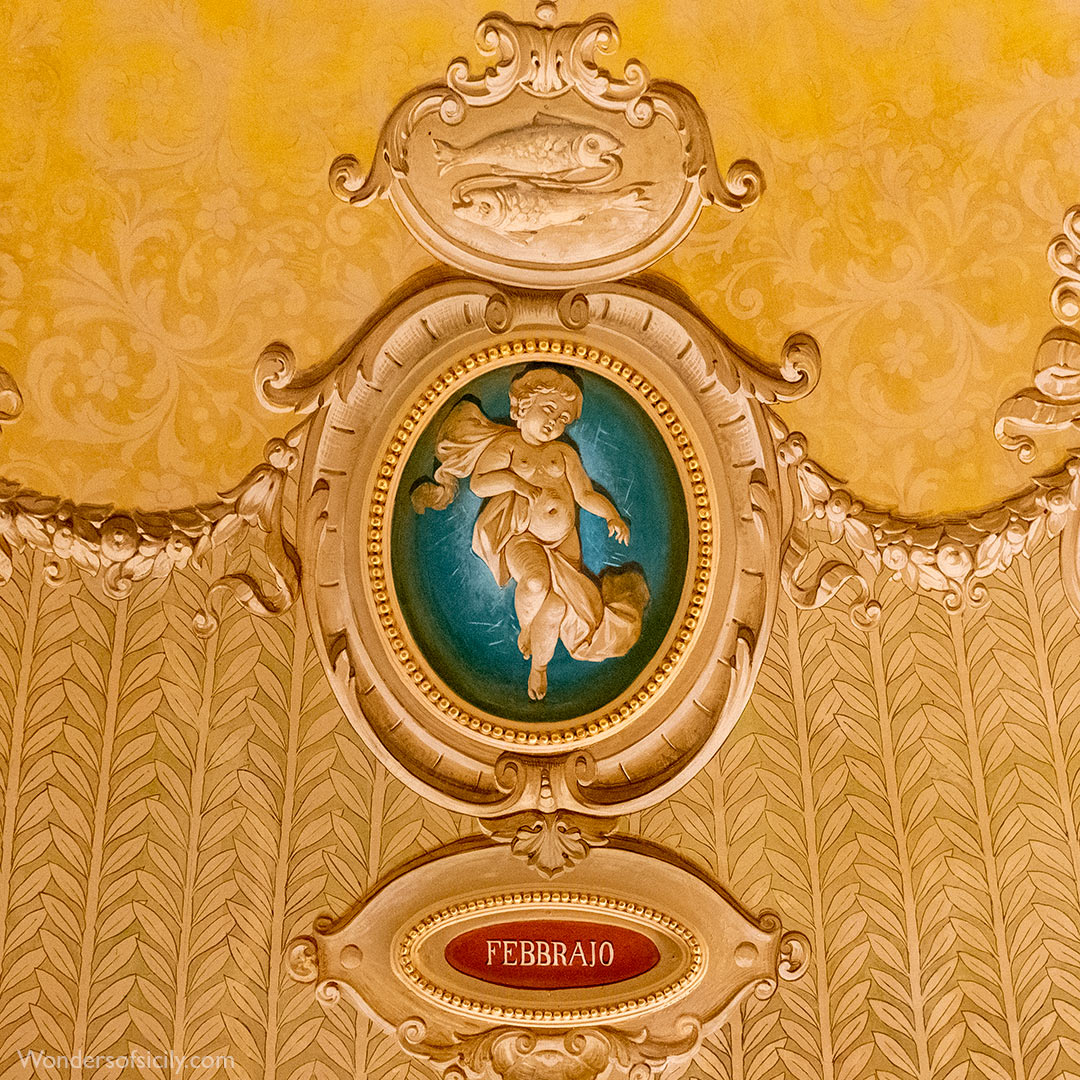
The deconsecrated church of Montevergine
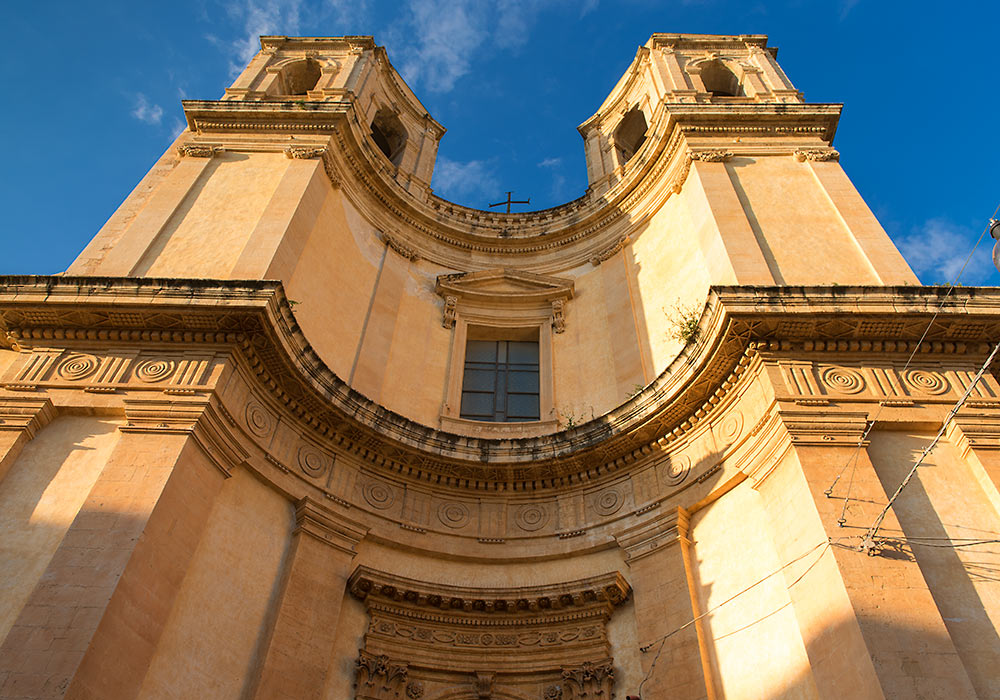
The deconsecrated church of Montevergine (Chiesa di Montevergine) with a facade attributed to Vincenzo Sinatra. This church stands at the top of the street Via Corrade Nicolaci. The great historian of the Sicilian Baroque Anthony Blunt notes that the curve of the facade «embraces the twin towers as well as the central bay, an arrangement which is also to be found in Fischer von Erlach's Dreifaltigkeitskirche» [The Holy Trinity Church] in Salzburg, Austria, «which the Sicilian architect may have known from an engraving».
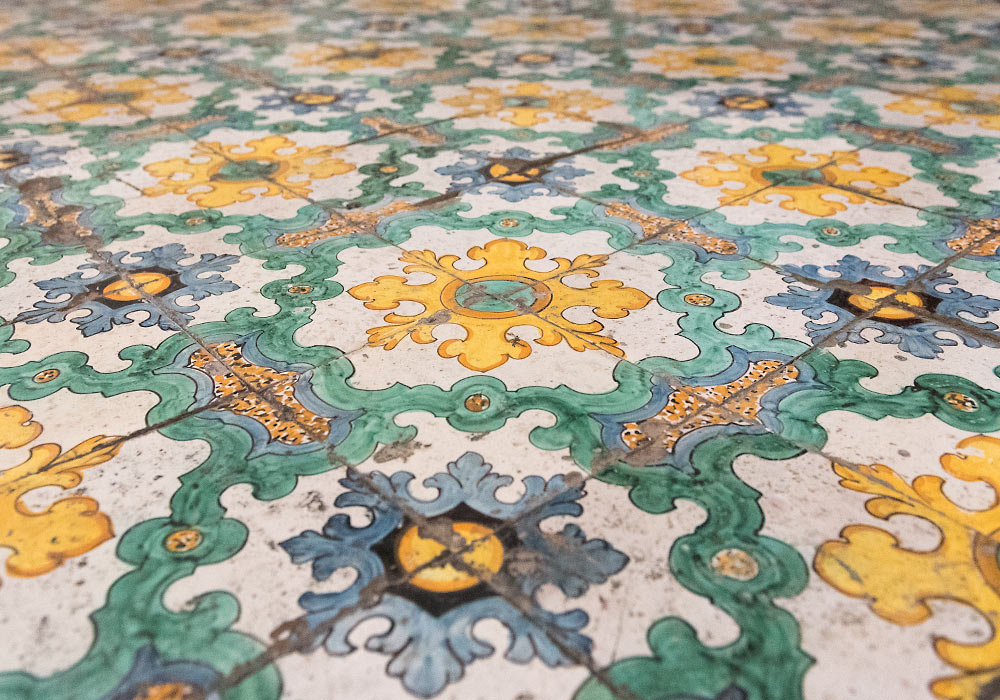
18th-century floor of majolica tiles (from Caltagirone) in the deconsecrated church of Montevergine, Noto.
Chiesa di S. Carlo (Chiesa del Collegio)
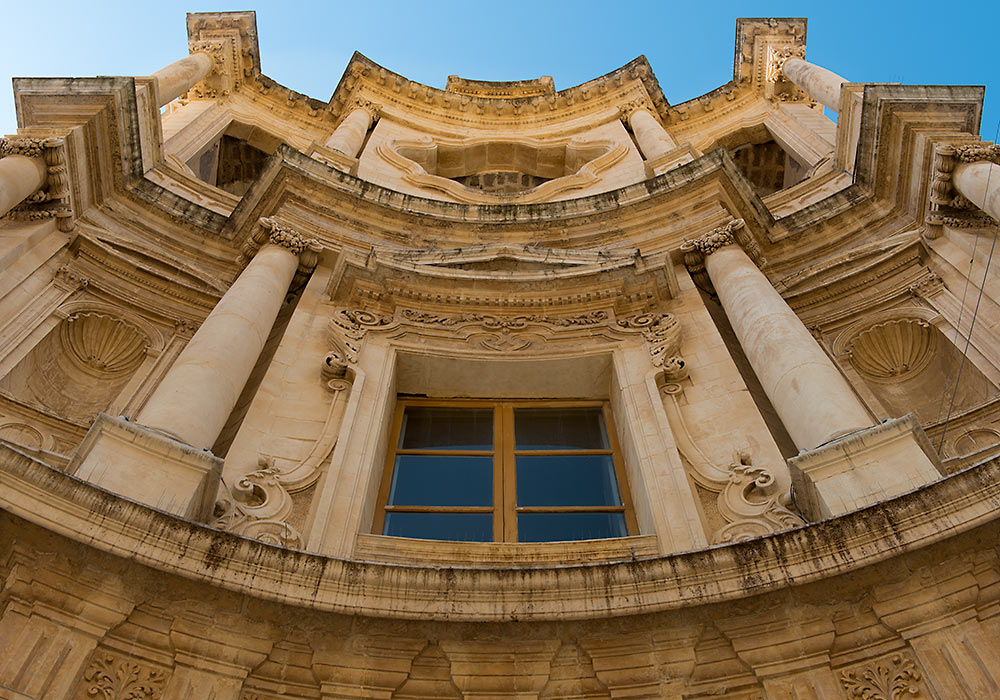
Chiesa di S. Carlo (Chiesa del Collegio).
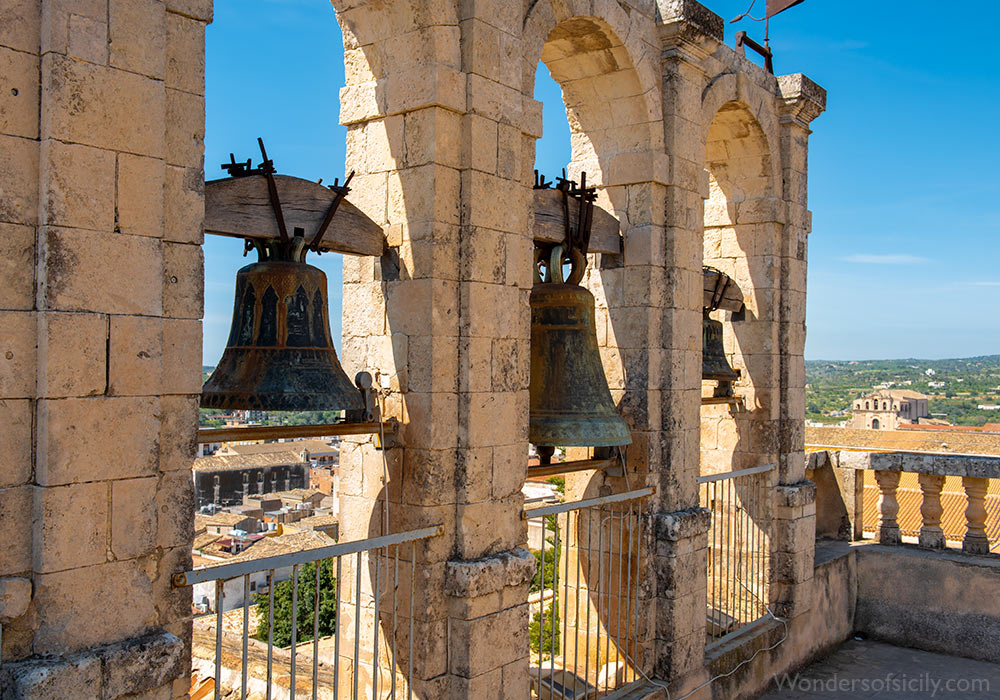
The church bells on the terrace of the church San Carlo's bell-tower (Chiesa del Collegio).
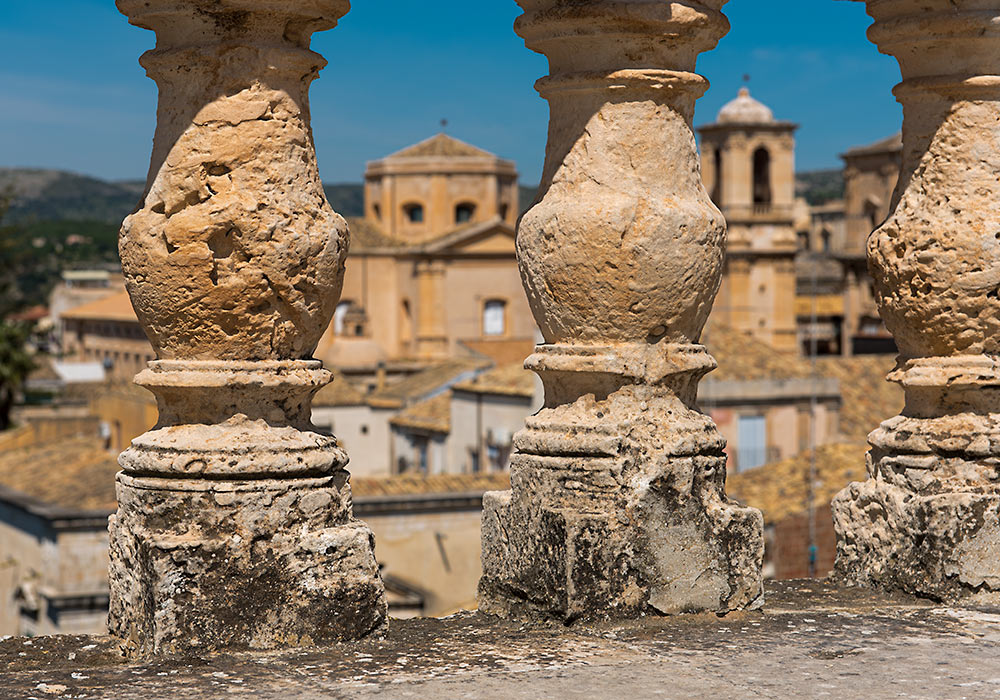
A view from the terrace of the church San Carlo's bell-tower (Chiesa del Collegio).
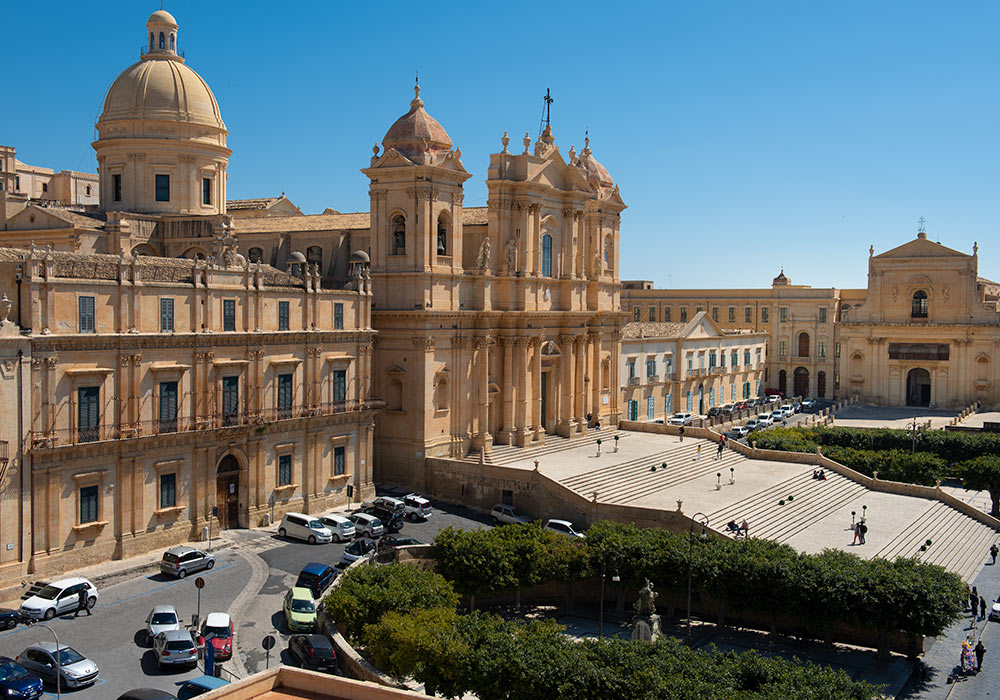
Noto Cathedral seen from the terrace of the church of San Carlo.
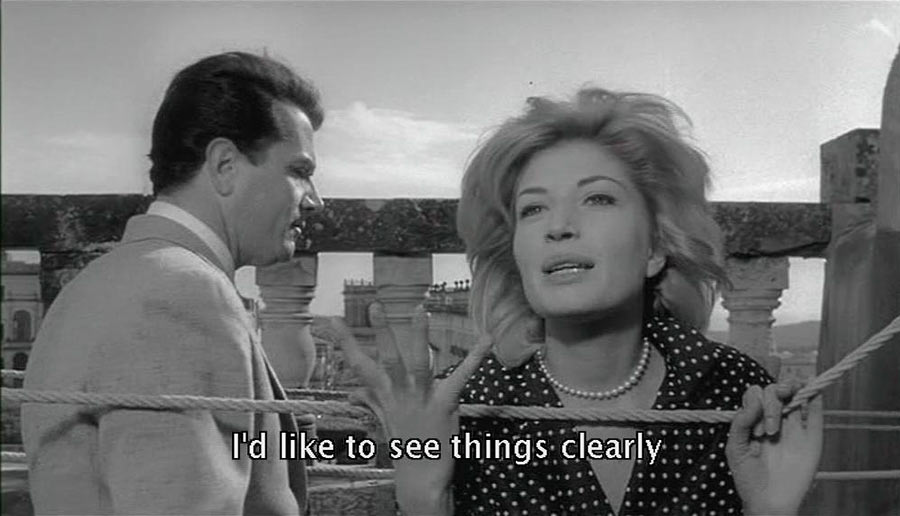
One scene in Antonioni's masterpiece L'avventura takes place on the terrace of the church San Carlo's bell-tower (Chiesa del Collegio). Almost the whole movie is filmed in Sicily.
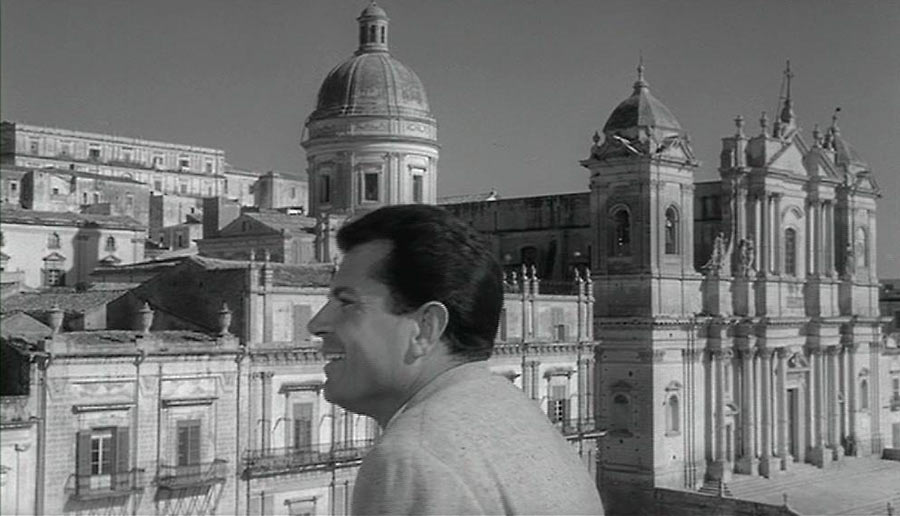
The view from San Carlo's bell-tower is beathtaking. Here Gabriele Ferzetti in Antonioni's L'avventura, a film that for the most part takes place in Sicily (Aeolian islands, Milazzo, Villa Palagonia in Bagheria, Noto, Taormina). In the background: Noto cathedral.
Baroque wonders
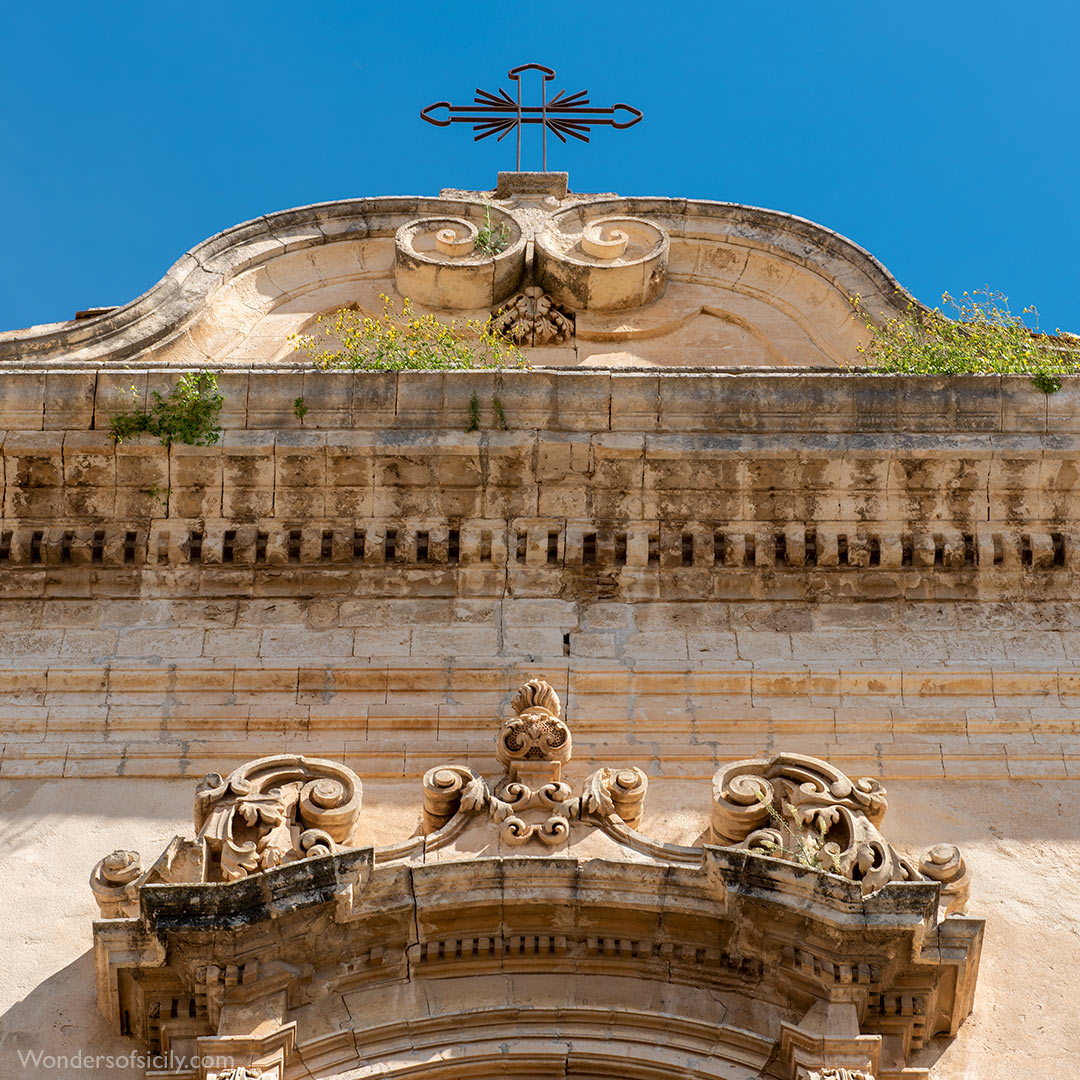
A church in Noto.
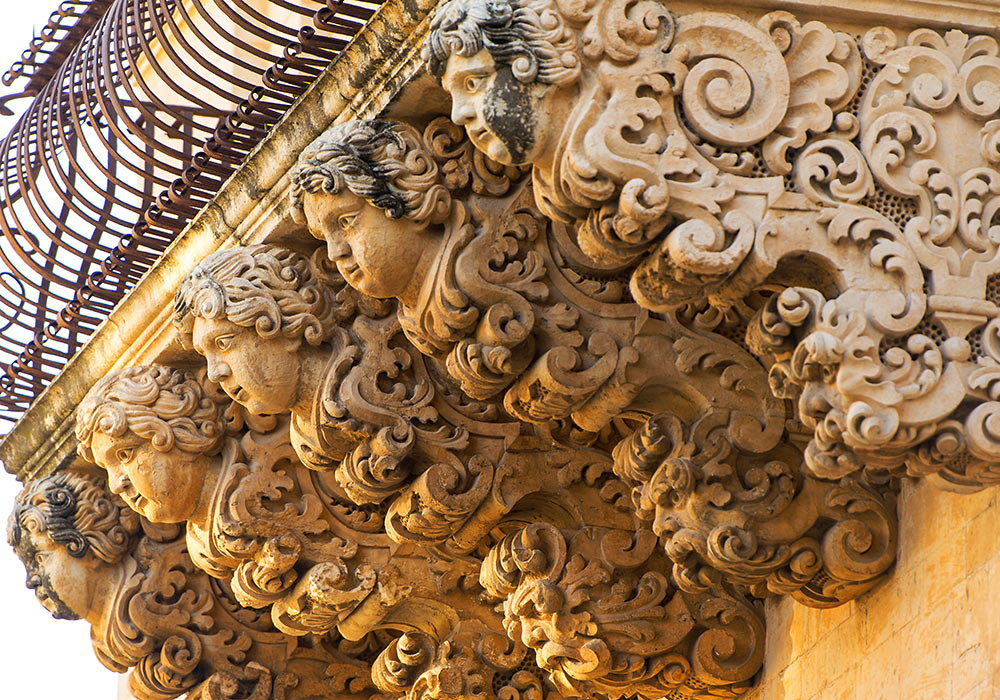
Detail of a balcony on Palazzo Nicolaci in Noto.
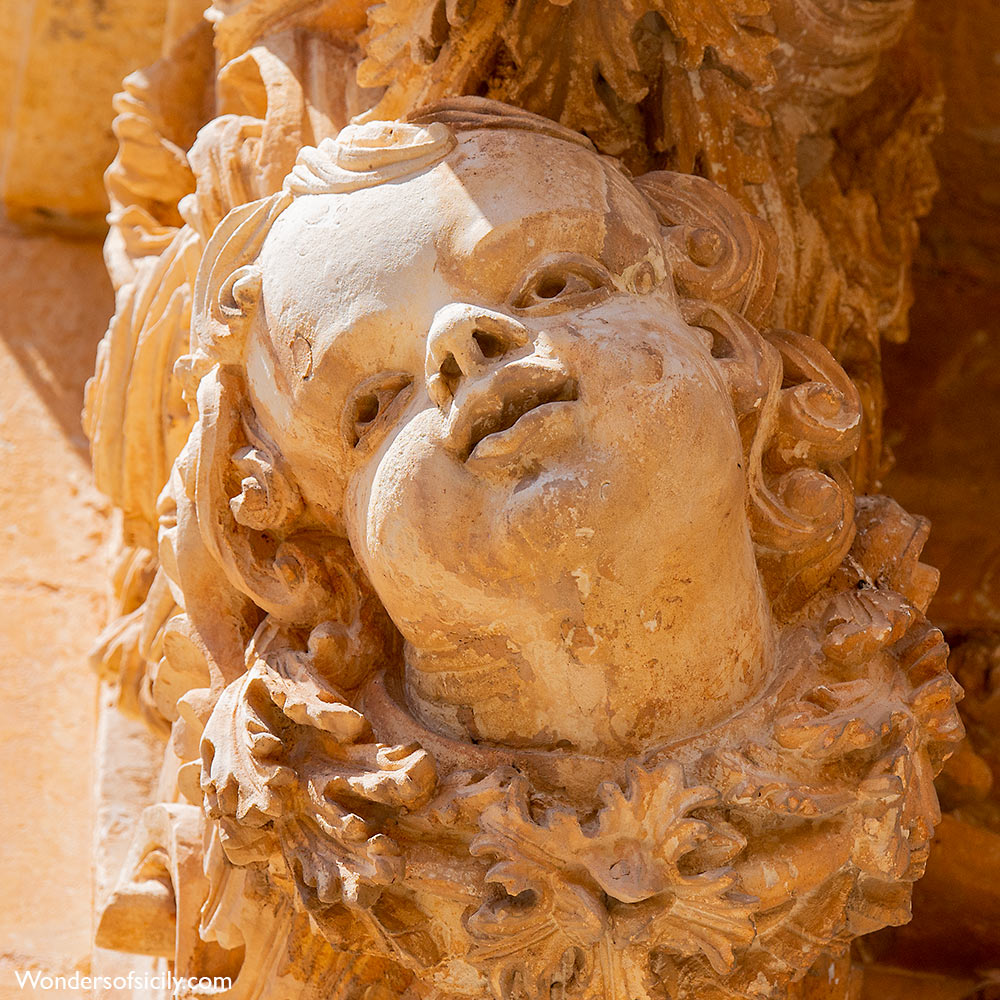
Face on a baroque corbel. Noto.
Especially in eastern Sicily, the baroque balconies have instricately carved brackets.
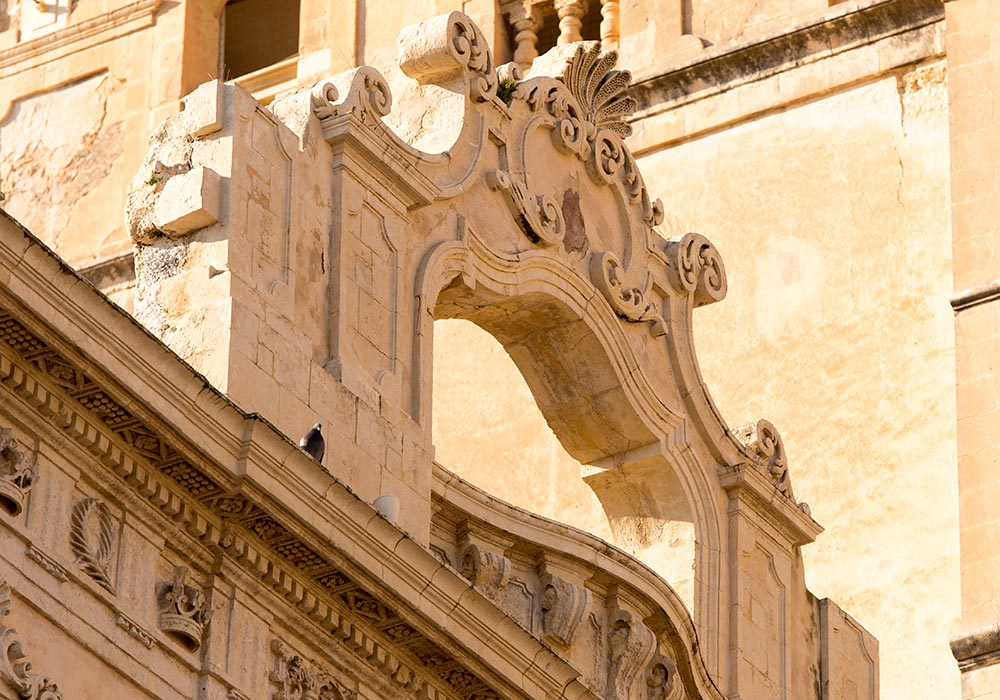
Photo: Per-Erik Skramstad / Wonders of Sicily
Porta Reale
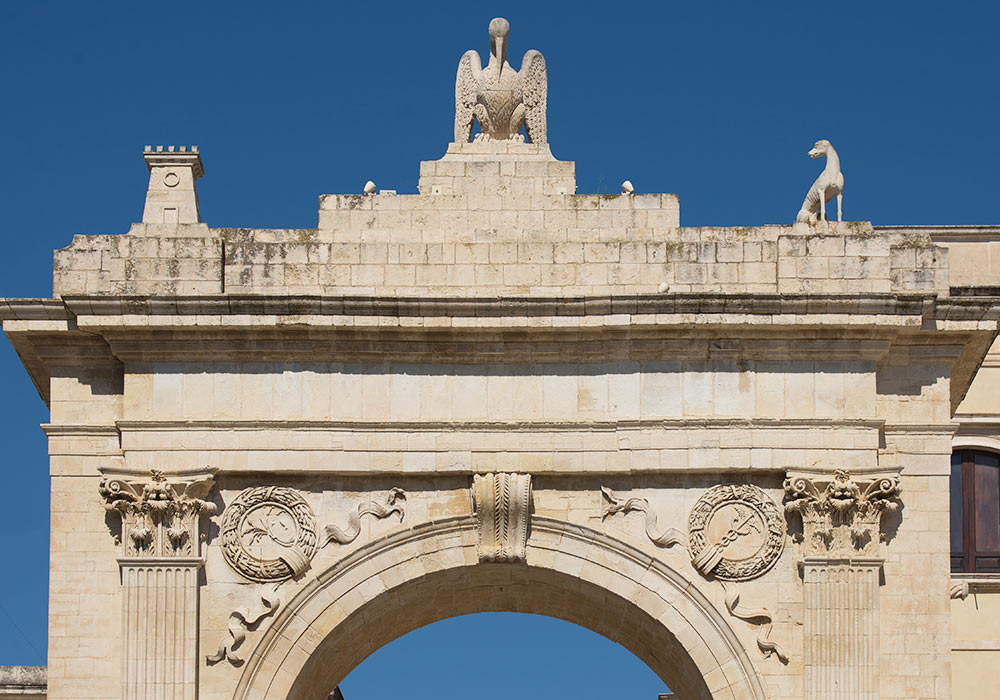
The Porta Reale marks the entrance to Noto and leads directly into the main street, Corso Vittorio Emanuele. The commemorative arch was erected for the visit of Ferdinand II of Bourbon in 1838. On the top you see the three symbols of the people of Noto, a tower for strength, dog for loyalty, and pelican for self-sacrifice, according to Blue Guide Sicily.
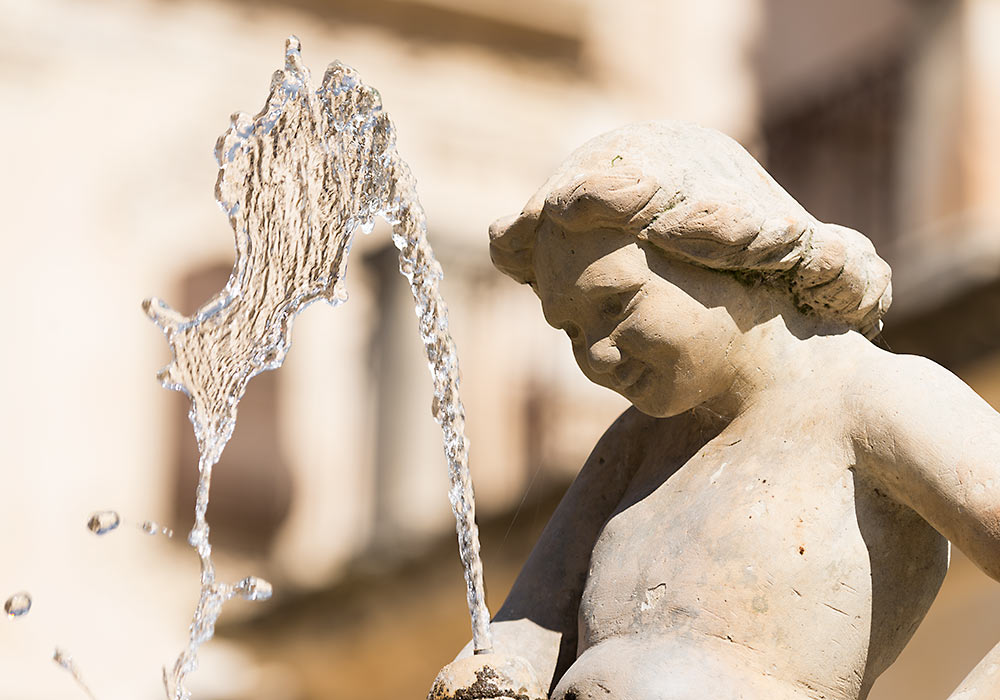
Noto Cathedral
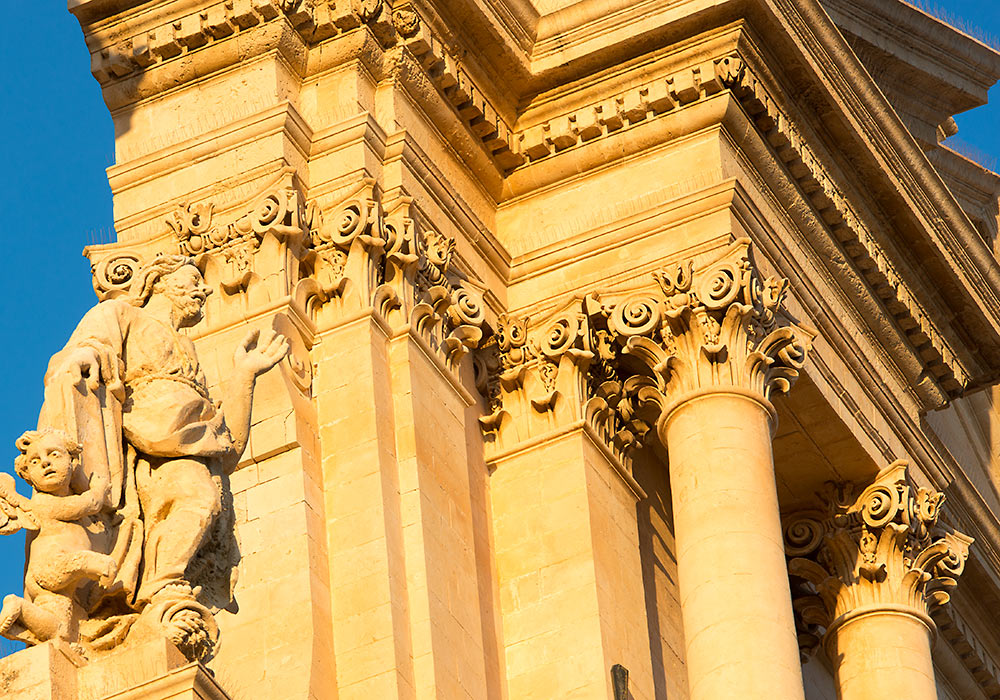
Detail of the cathedral in Noto.
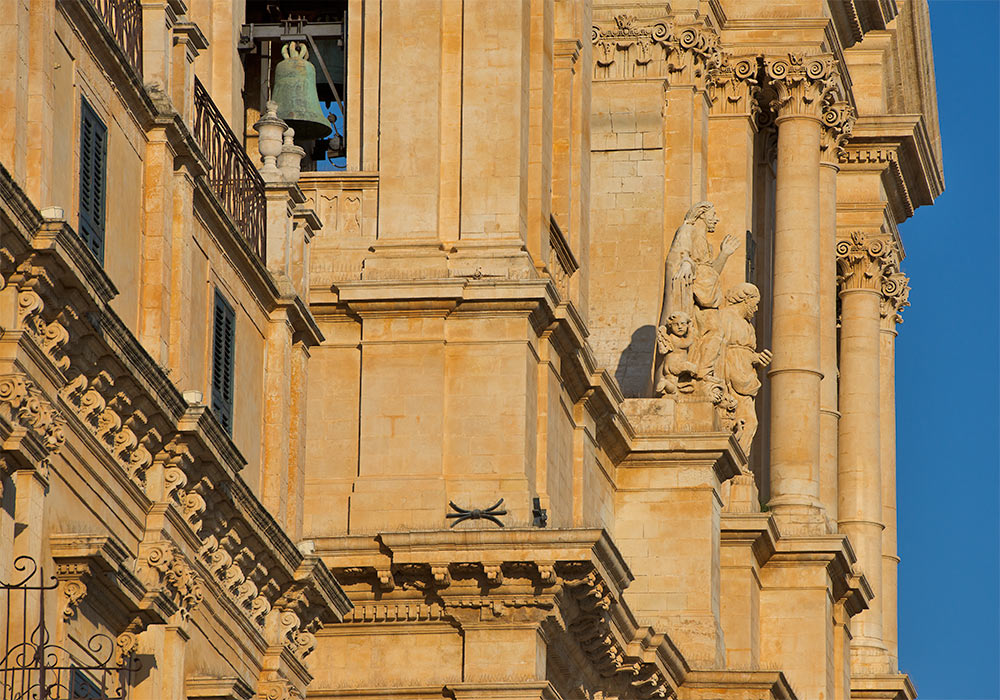
Detail of the Noto cathedral facade.
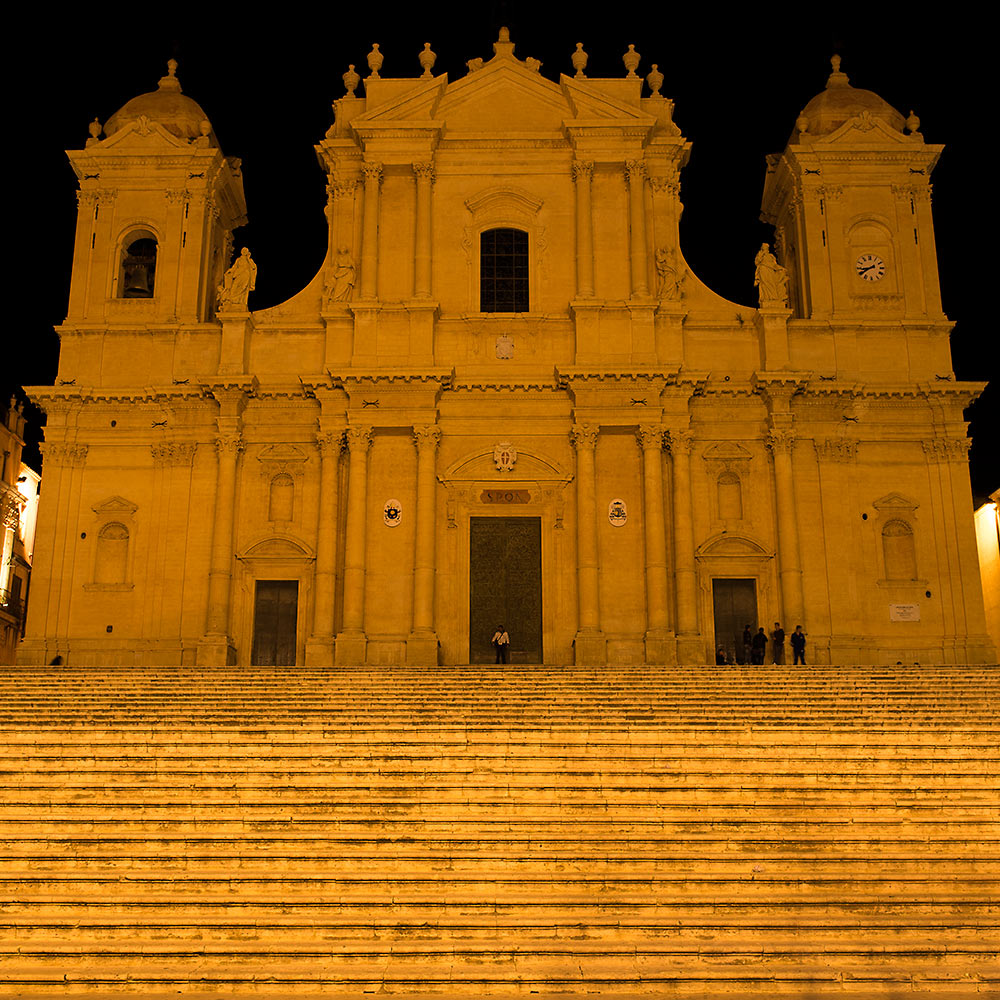
The Cathedral by night.
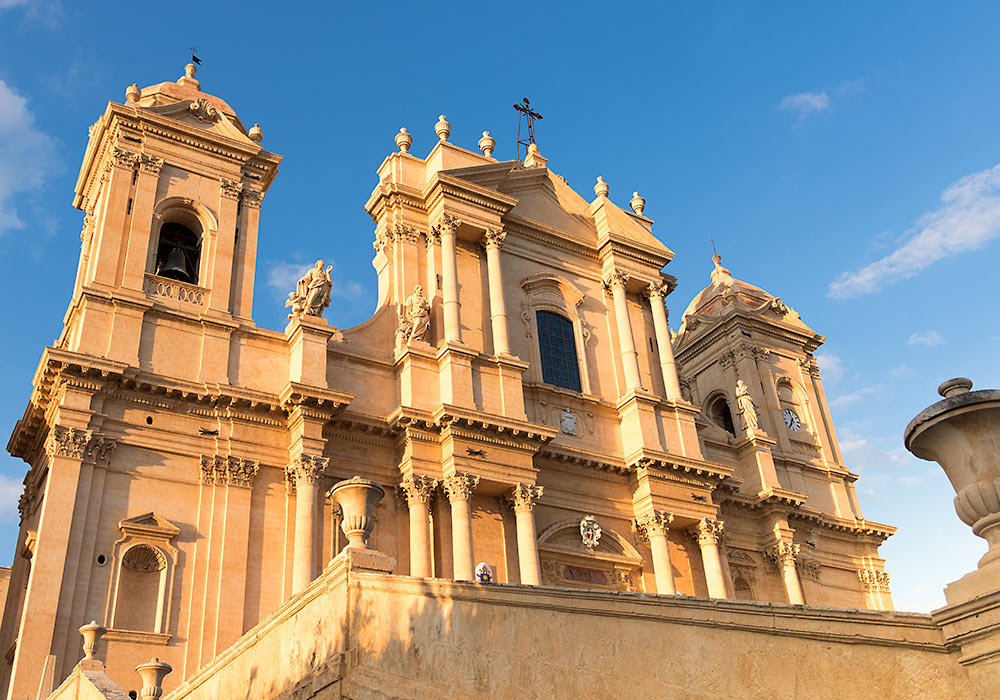
Noto cathedral in the evening sun.
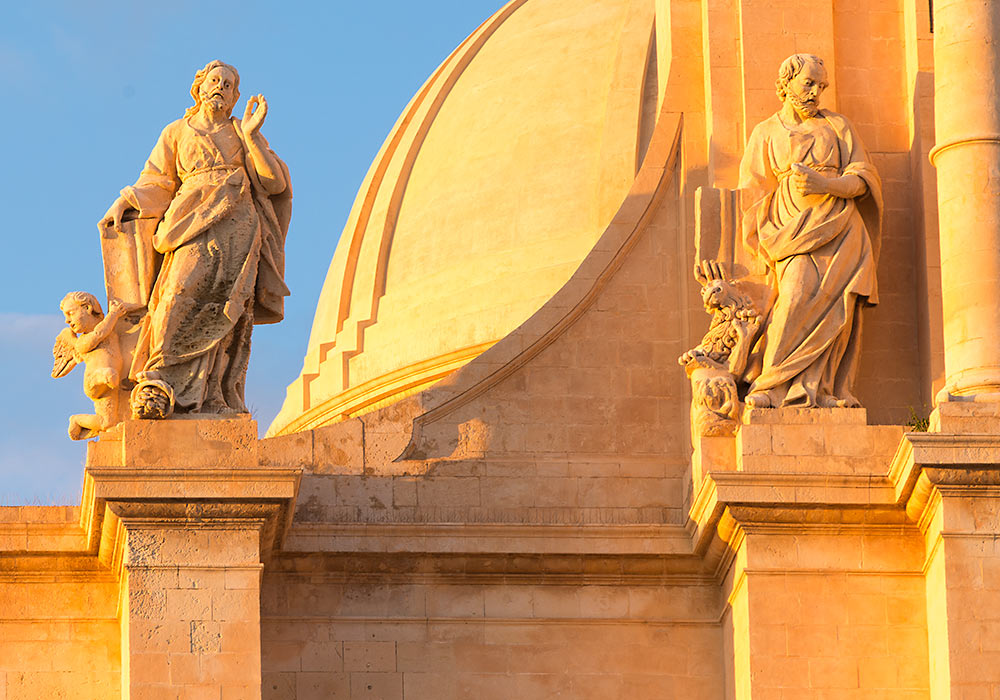
The cathedral (detail) bathing in the evening sun.
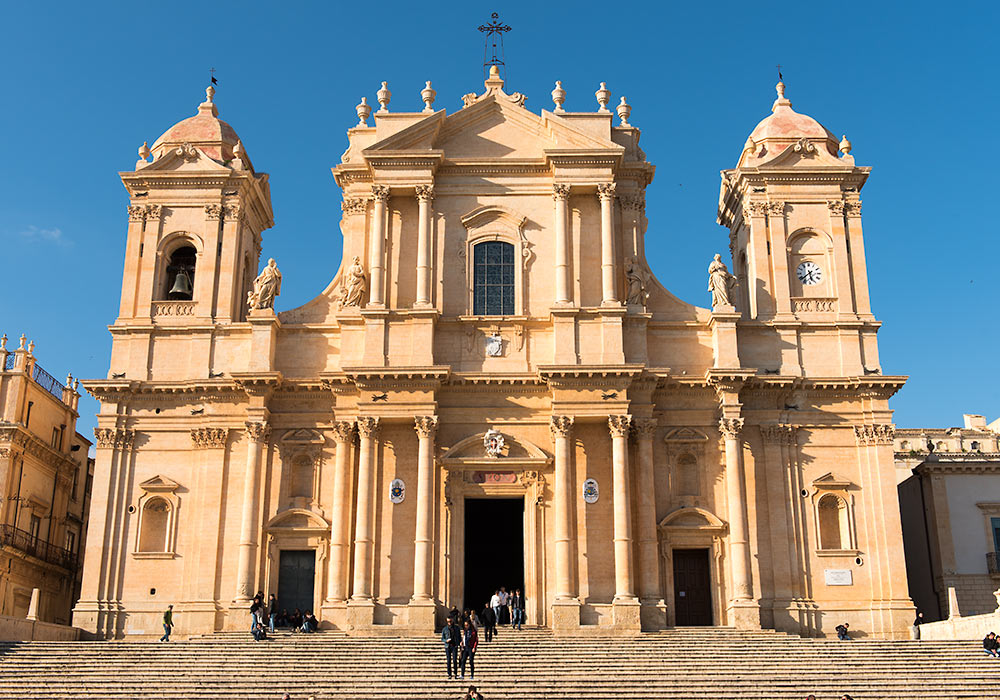
The cathedral in Noto. Architects: Rosario Gagliardi and Vincenzo Sinatra.
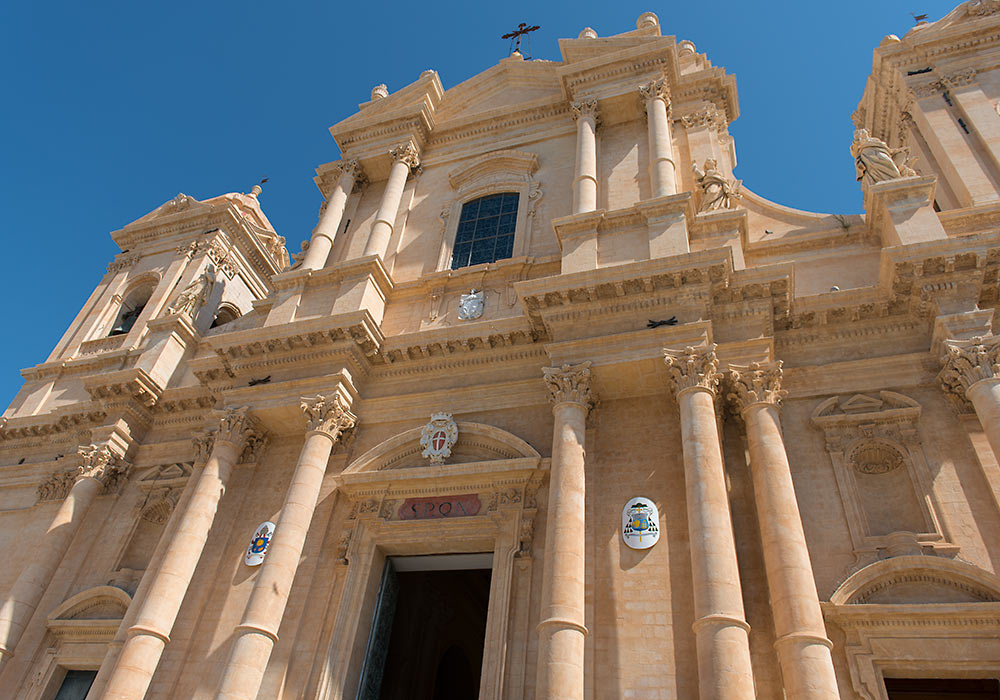
The baroque cathedral in Noto seen from a low angle.
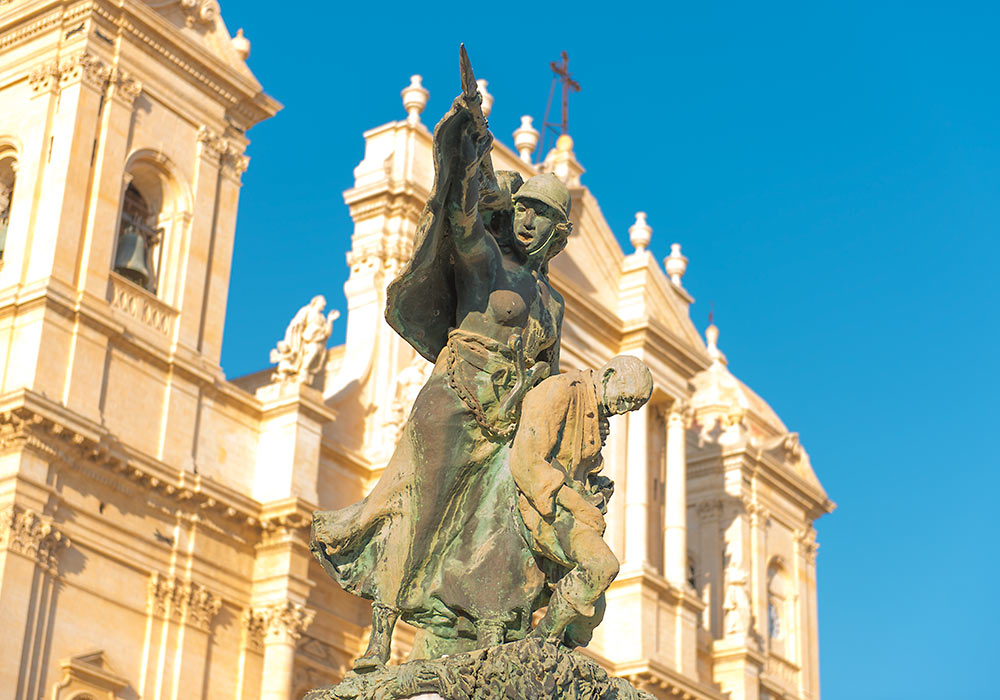
WWI Memorial in front of the cathedral in Noto.
Palazzo Nicolaci
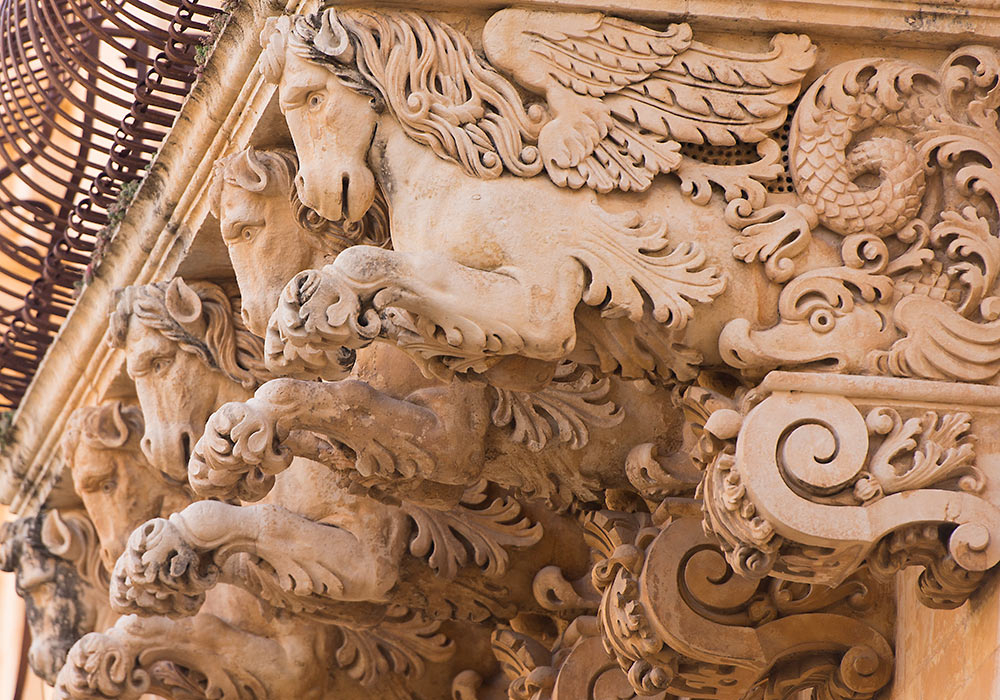
Detail of a balcony on Palazzo Nicolaci in Noto.
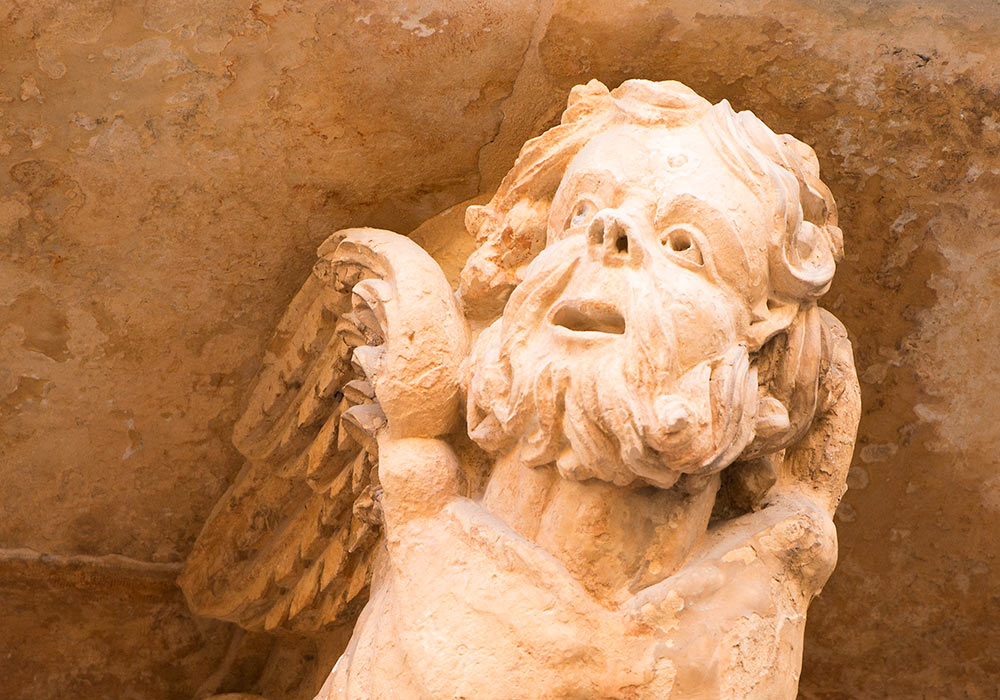
Detail of a balcony on Palazzo Nicolaci in Noto.
The Opera House
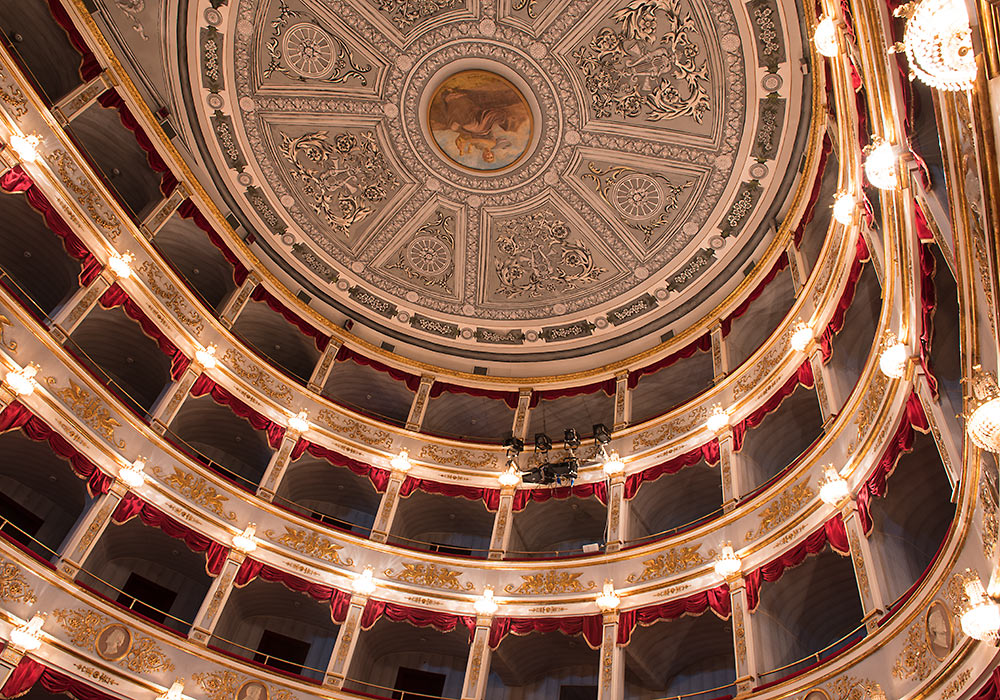
On Piazza XVI Maggio (aka Piazza San Domenico), opposite the church of San Domenico, you'll find the beautiful small opera house, Teatro Vittorio Emanuele (1861) with 330 seats.
Photo: Per-Erik Skramstad / Wonders of Sicily
Sicily in Operas
- Les Vêpres siciliennes (Giuseppe Verdi)
- Tancredi (Gioachino Rossini)
- Cavalleria rusticana (Pietro Mascagni), it has often been performed in a so-called Cav/Pag double-bill with Pagliacci by Ruggero Leoncavallo.
- Béatrice et Bénédict (Hector Berlioz). Based on Shakespeare's Much Ado About Nothing.
- Król Roger (Karol Szymanowski )
A wedding in Noto

Little boy with big job to do. Going up the impressive stairs of the cathedral in Noto before the wedding (Saturday, 11 April 2015) with the wedding rings.

Here comes the bride: The beautiful bride in Noto 11 April 2015 is waiting to enter the baroque cathedral with her father.
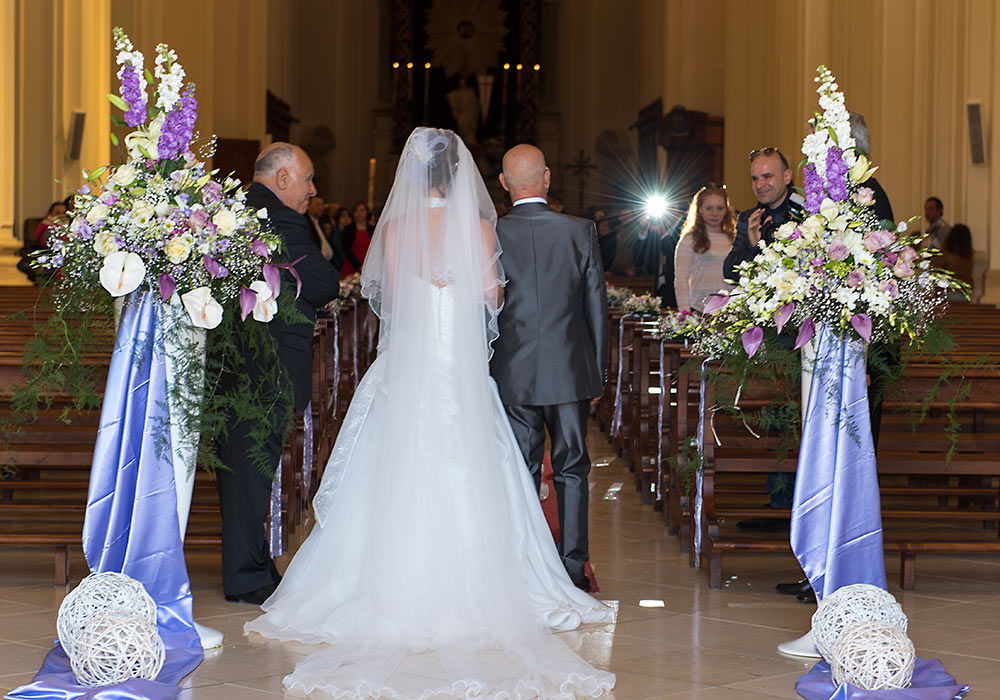
Here comes the bride with her father.
See more photos of weddings in Sicily here!
Val di Noto
The distance between Noto and some other cities in Sicily
Noto-Palermo 303 km
Noto-Cefalù 275 km
Noto-Siracusa 38 km
Noto-Agrigento 242 km
Noto-Taormina 145 km
Noto-Catania 93 km
Noto-Trapani 402 km
The Vendicari Nature Reserve
Protected since 1984, the nature reserve called Oasi Faunistica di Vendicari is a wetland of great interest for its wildlife.
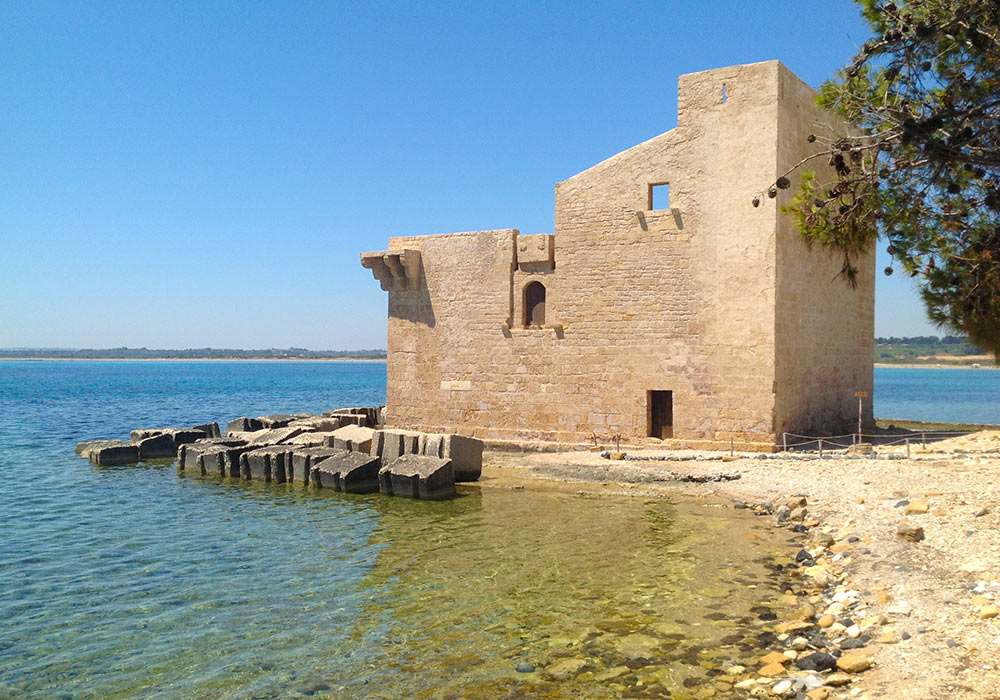
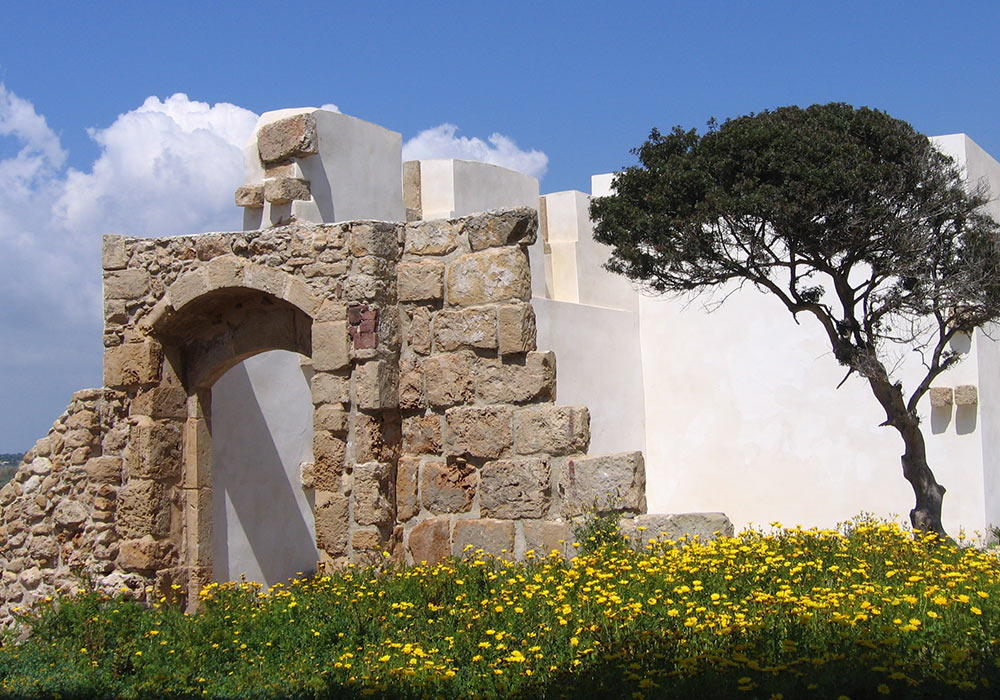
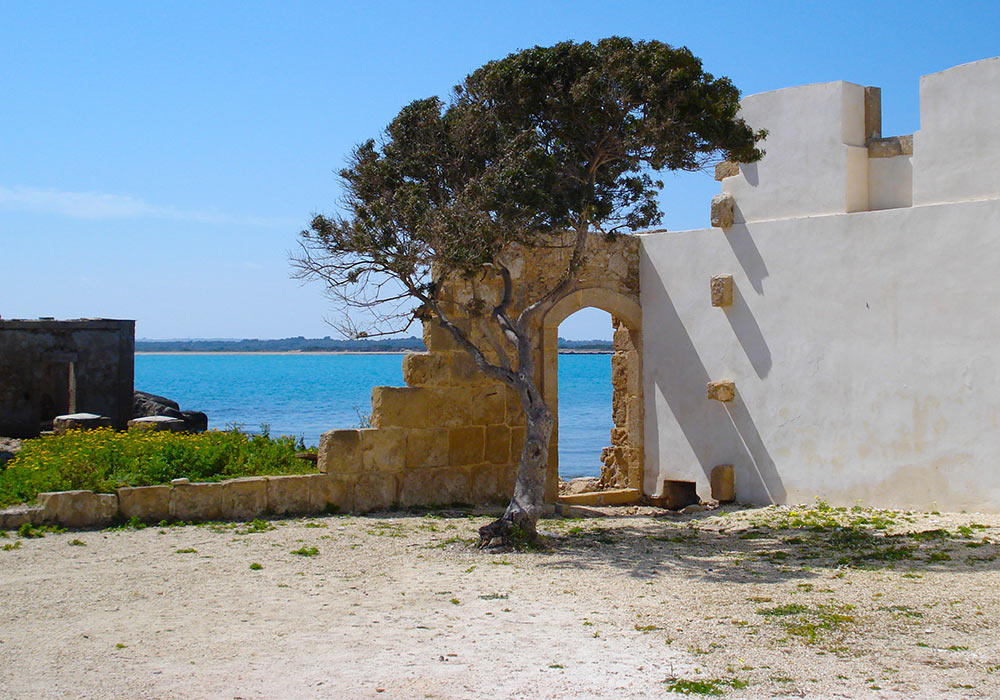
Official web site of the The Vendicari Nature Reserve (in Italian)
See here for hotels / accommodation in Noto
The late baroque towns of the Val di Noto in South-Eastern Sicily that are inscribed on the UNESCO World Heritage List
The late baroque towns of the Val di Noto in South-Eastern Sicily that are inscribed on the UNESCO World Heritage List are Caltagirone, Militello Val di Catania, Catania, Modica, Noto, Palazzolo, Ragusa and Scicli. These towns were all rebuilt after the earthquake in 1693 on or beside towns. According to UNESCO, they represent a considerable collective undertaking, successfully carried out at a high level of architectural and artistic achievement. Keeping within the late Baroque style of the day, they also depict distinctive innovations in town planning and urban building.
The late baroque towns inscribed on the UNESCO World Heritage List represents the culmination and final flowering of Baroque art in Europe. The exceptional quality of the late Baroque art and architecture in the Val di Noto lies in its geographical and chronological homogeneity, as well as its quantity, the result of the 1693 earthquake in this region. The towns were all in existence in medieval times, characteristically around a castle and with monastic foundations.
Sicilian Sites on UNESCO's World Heritage List
- Agrigento: Archaeological Area of Agrigento (UNESCO)
- Aeolian Islands: Isole Eolie. The group consists of seven islands (Lipari, Vulcano, Salina, Stromboli, Filicudi, Alicudi and Panarea) and five small islets (Basiluzzo, Dattilo, Lisca Nera, Bottaro and Lisca Bianca) in the vicinity of Panarea. (UNESCO)
- Caltagirone (UNESCO)
- Catania (UNESCO)
- Cefalù Cathedral
- Militello Val di Catania (UNESCO)
- Modica (UNESCO)
- Monreale Cathedral
- Mount Etna (UNESCO)
- Noto (UNESCO)
- Palermo: Palazzo dei Normanni (The Norman Palace)
- Palermo: Cappella Palatina (The Palatine Chapel in the Norman Palace)
- Palermo: Church of San Giovanni degli Eremiti
- Palermo: Church of Santa Maria dell'Ammiraglio (also known as the Martorana)
- Palermo: Church of San Cataldo
- Palermo: Cathedral of Palermo
- Palermo: The Zisa Palace (La Zisa)
- Palermo: The Cuba Palace (La Cuba)
- Palazzolo Acreide (UNESCO)
- Ragusa (UNESCO)
- Scicli (UNESCO)
- Syracuse and the Rocky Necropolis of Pantalica (UNESCO)
Villa del Tellaro
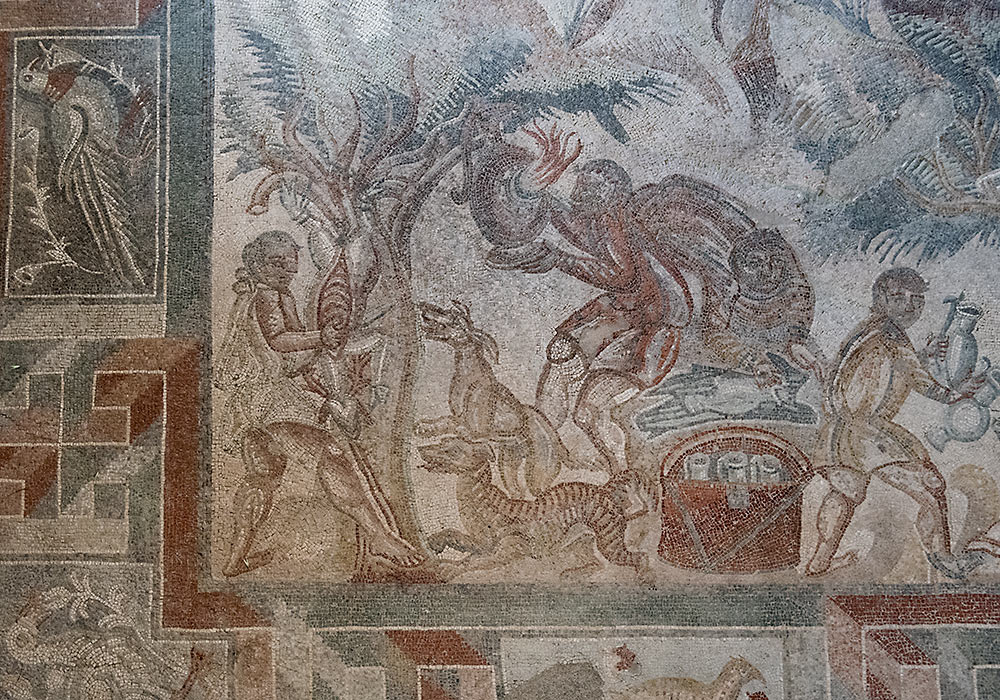
The Roman villa was discovered in 1971. The mosaics were probably the work of craftsmen from North Africa. Based on numismatic evidence, they were made in the second half of the fourth century CE. In 2008 it was inaugurated and made accessible to the public. For a better preserved villa, see Villa Romana del Casale near Piazza Armerina.
Chiesa di Santa Chiara
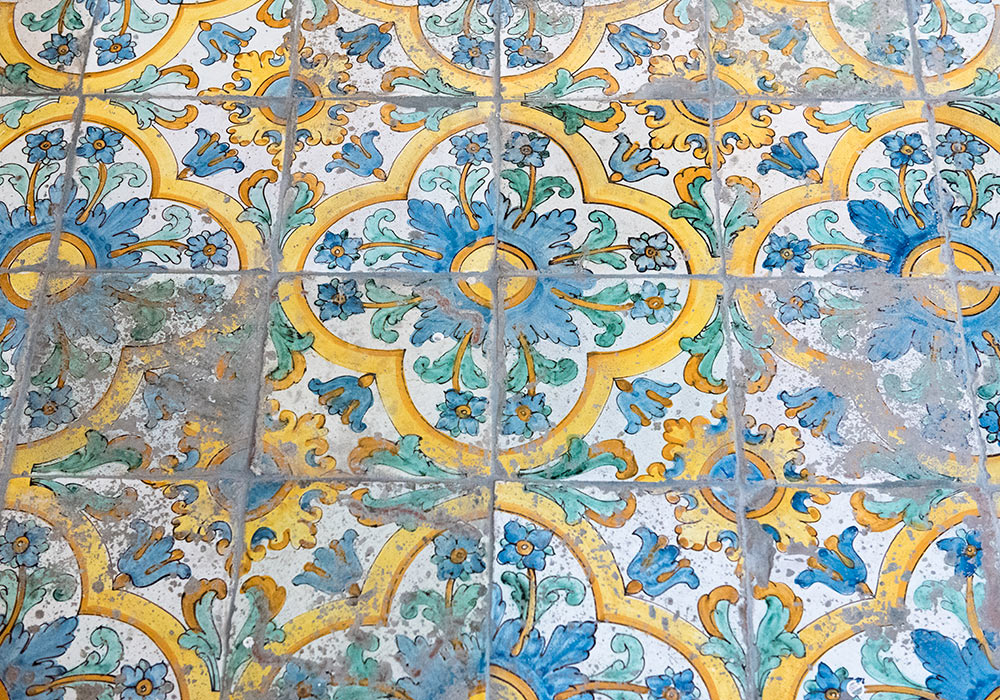
Floor of majolica tiles (from Caltagirone) in the church of Santa Chiara, Noto. Santa Chiara has an oval interior by Gagliardi (1730–48).
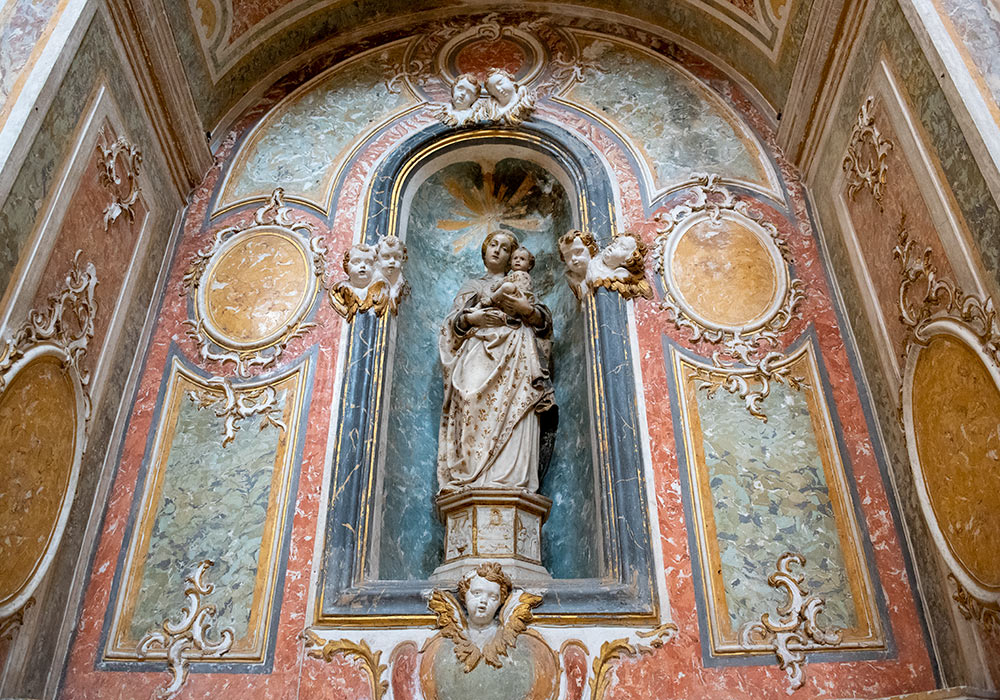
The Holy Madonna. Chiesa di Santa Chiara.
Hotel La Corte del Sole, Noto
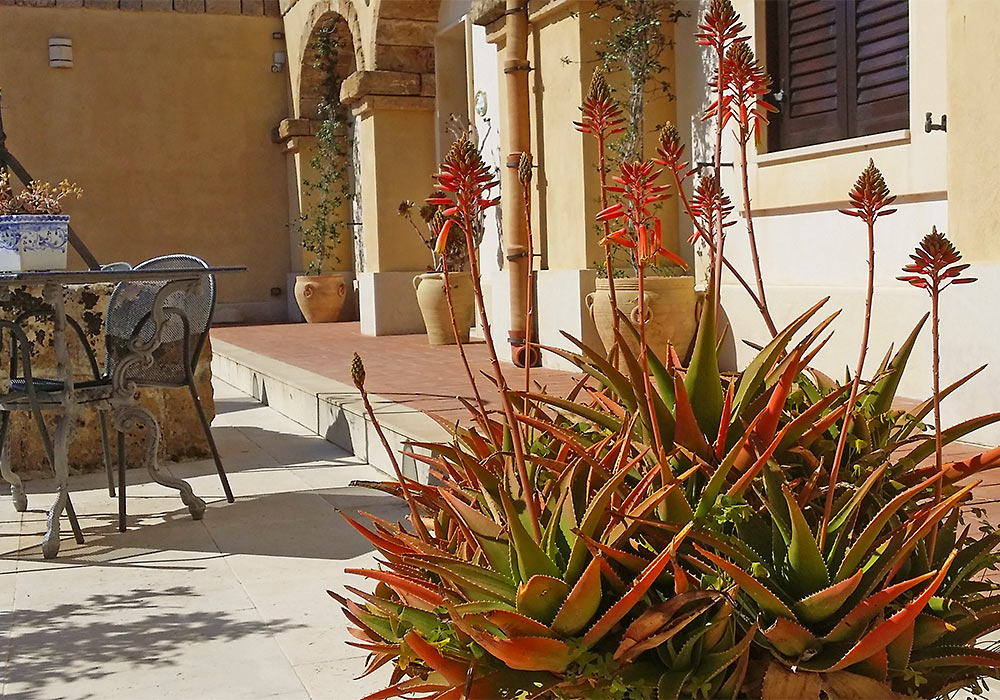
Aloe plant in the beautiful courtyard at the Hotel La Corte del Sole, Noto.
Acireale - Agrigento - Castelbuono - Catania - Cefalù - Enna - Erice - Modica - Monreale - Noto - Palermo - Ragusa Ibla - Segesta - Selinunte - Taormina - Syracuse (Siracusa) - Trapani -
Alesa Arconidea - Aleister Crowley in Cefalù - Bagheria - Balconies in Sicily - Baron Wilhelm von Gloeden - Baroque architecture in Sicily - Birds in Sicily - Caccamo - cars in Sicily - Castelmola - Cats in Italy - Collesano - Death in Sicily - Death in Sardinia - Entella - Film locations in Sicily - Fish, fishermen and fish markets in Sicily - Gela - Gibilmanna - Greeks in Sicily - Halaesa Arconidea - insects in Sicily - Linguaglossa - Lizards in Sicily - Maps of Sicily - Monreale Cathedral - Monreale Cloister - Life in Sicily - Mosaics in Sicily - Mount Etna - Museums and Exhibitions - Normans in Sicily - Palermo: Museum of the Holy Inquisition - Palermo: the Norman Palace - Palermo: Oratorio del SS. Rosario, San Domenico - Palermo: the Palatine Chapel (Cappella Palatina) - Palermo: Richard Wagner in Sicily - Palermo: La Zisa - Palermo: Chiesa Santa Maria della Catena (Church of Saint Mary of the Chain) - Syracuse: The Archeological Park - Tommaso Fazello - Tuna fishing in Sicily (La Mattanza) - Videos - Villa Palagonia (Bagheria) "The Villa of Monsters" (Villa dei Mostri) - Villa Romana del Casale (near Piazza Armerina) - Sicily in Art - Sicilian Art and Artists - The White Lotus season 2 locations in Sicily -

